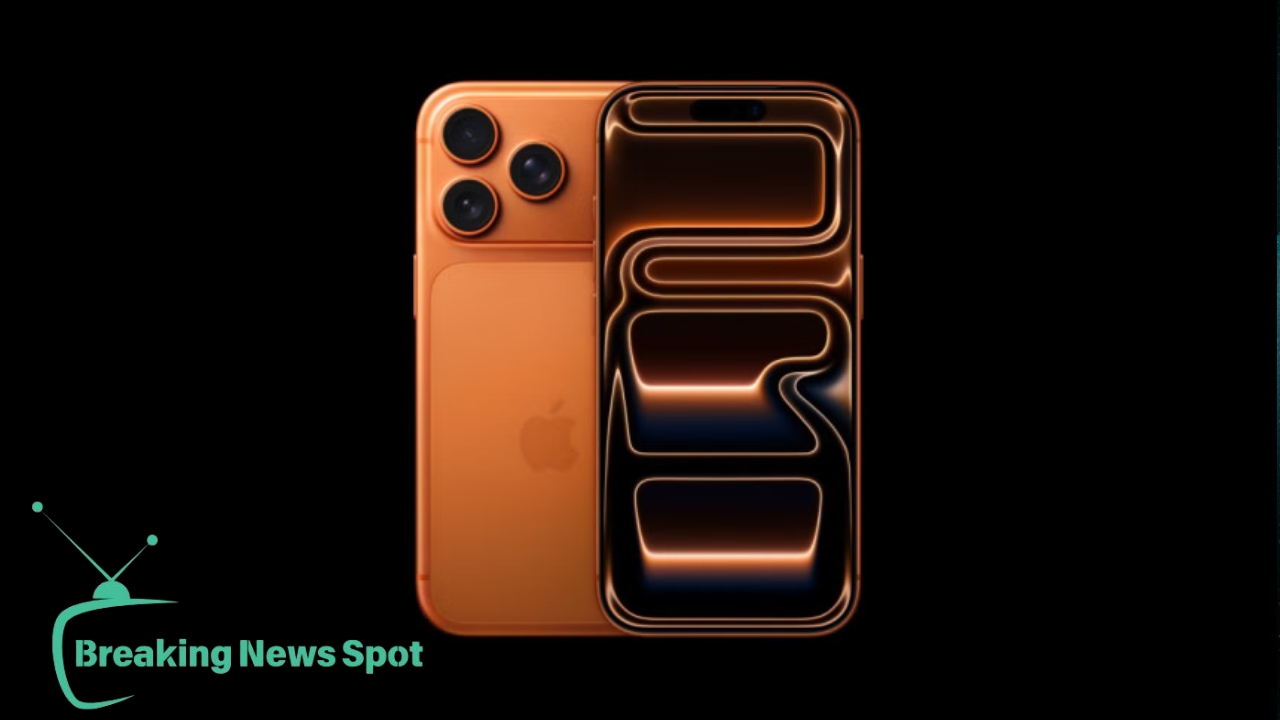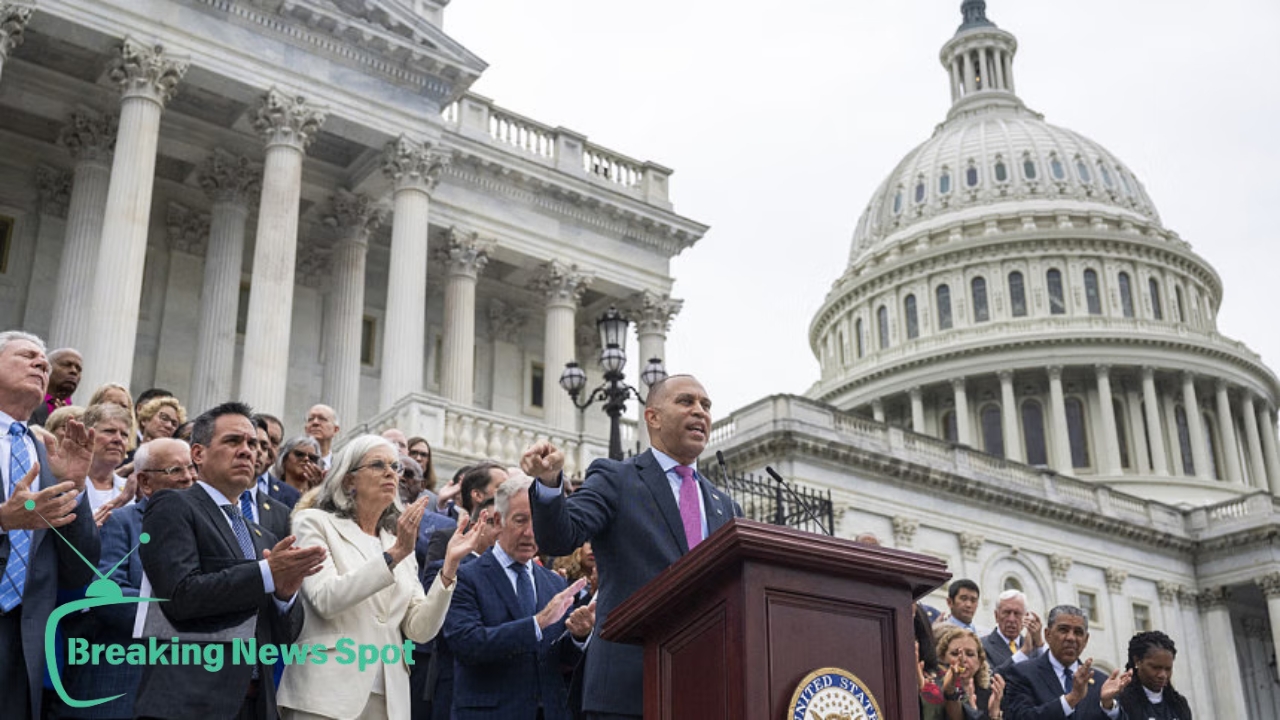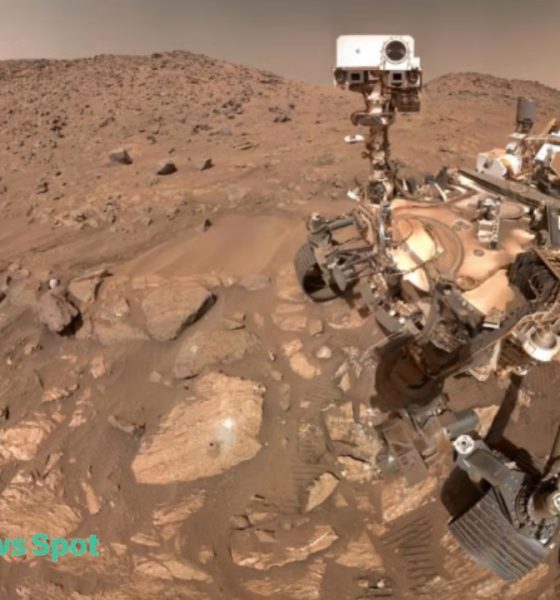Uncategorized
Trump declared that the US and Vietnam will trade.

Days before the US president could increase tariffs on most imports, Donald Trump announced on Wednesday that the US would impose a lower-than-promised 20% duty on many Vietnam products, easing tensions with its tenth-largest trade partner.
According to him, transshipments from third nations through Vietnam would be subject to a 40% levy, while Vietnamese goods would be subject to a 20% duty. He stated that Vietnam could import US goods with no duty.
Trump announced on Truth Social, “It is my Great Honor to announce that I have just made a Trade Deal with the Socialist Republic of Vietnam,” following a conversation with To Lam, the country’s top leader.
Trump’s declaration comes only days before he is set to increase tariffs on the majority of imports, one of his signature economic policies, on July 9.
A 46% duty would have been imposed on US importers of Vietnamese goods under that plan, which was announced in April.
There were few details. It remained unclear which goods would be subject to Trump’s 20% tax and whether any would be eligible for reduced or higher overall duties.
How the new trans-shipment clause, which targets goods that are primarily created in China but are subsequently labeled “Made in Vietnam,” would be applied and enforced was also left for later discussion.
In a statement announcing what it called an agreement on a joint declaration concerning a trade framework, the Vietnamese government did not disclose the precise tariff levels.
“Providing preferential market access for US goods, including large-engine cars,” the Hanoi administration claimed Vietnam will pledge.
Trump would benefit politically from a deal between the two nations, as his staff has had difficulty closing deals with Washington’s largest trading partners in time for the deadline.
Although the administration has hinted at an upcoming agreement with India, the scope of previous truces with China and Britain was constrained. Negotiations with Japan, the United States’ closest ally in Asia and sixth-largest trading partner, seemed to be encountering obstacles.
Vietnam’s main export destination is the United States, and the two nations’ expanding diplomatic, military, and economic connections serve as a buffer against China, Washington’s most significant strategic adversary. Vietnam has made an effort to maintain tight ties with both countries.
Following the news, shares of major US clothing and sportswear manufacturers, such as Nike (NKE.N), Under Armour (UAA.N), and North Face (VF Corp. VFC.N), finished higher on Wednesday.
Lam also requested that Trump lift the ban on high-tech exports to Vietnam and acknowledge Vietnam as a market economy, according to Vietnam. Hanoi has long pushed for those reforms.
Requests for further clarification from the Vietnamese commerce ministry and the White House were not answered.
INCREASING TRADE LINKS
Trade between the United States and Vietnam has increased dramatically after Trump levied tariffs on hundreds of billions of dollars’ worth of Chinese goods during his 2017–2021 term. However, when importers looked for ways to get around the China levies, nearly all of this trade has taken the shape of commodities coming from Vietnam to the United States.
Vietnam’s exports have increased almost threefold since 2018, rising from less than $50 billion in 2018 to around $137 billion in 2024, according to Census Bureau data. From less than $10 billion in 2018 to just over $13 billion last year, US exports to Vietnam have increased by only about 30% during that time.
Dan Martin, a business adviser at Dezan Shira & Associates, stated on LinkedIn that “transshipping” is a nebulous and frequently politicized phrase in trade enforcement. “How it’s defined and how it’s applied in practice will shape the future of US-Vietnam trade relations.”
On April 2, Trump proposed a wave of tariffs for nations worldwide, but he postponed the application of the majority of the charges until July 9. In order to prevent a sharp increase in export duties, over a dozen nations are currently engaged in negotiations with the Trump administration.
In return for preferential treatment for British cattle and aircraft engines, Britain agreed to a 10% US tariff on a variety of commodities, including automobiles.
The deal with Vietnam, like the one with Britain in May, is more of a framework than a finalized trade agreement.
In a tit-for-tat tariff dispute, the United States and China also reached a truce in which Beijing allowed the United States to regain access to certain rare-earth minerals, but the two sides agreed to postpone further discussions on the majority of their differences.
“Had Trump stuck with 46 percent, much higher than the current tariff on China, Vietnam feared it would be disadvantaged by its competitors, especially in Southeast Asia,” said Murray Hiebert, a senior associate with the Southeast Asia program at the research tank CSIS.
“This likely would have dented Vietnam’s trust in the US and it might have toned down some of its security cooperation with Washington.”
Tech
Is the iPhone 17 a good purchase?

Apple requests that we upgrade every September. And every September, we question if the slick new iPhone is worth breaking the bank again or if the model from the previous year is still enough. With the release of the iPhone 17 range this year, the question is more pertinent than ever. Although Apple has made some significant adjustments, Android flagships are now more competitive than ever. Let’s dissect it, then. How much better is the iPhone 17 than the iPhone 16 from the previous year? And how does it compare to Android’s strengths if you’re already considering making a large purchase?
iPhone 16 vs iPhone 17
First, it should be noted that Apple hasn’t made many changes to its price. As with the iPhone 16, the starting price for the iPhone 17 is at $799. In contrast to the 16’s 128 GB of storage, this one comes with 256 GB as standard. The iPhone 17 Pro, which starts at $1,099, maintains the same price range as its predecessor but does away with the less expensive 128 GB option. Apple is subtly trying to get you to pay more, but the extra storage provides you piece of mind.
The A18 chip from last year has been replaced with the new A19 chip in terms of performance. It is quicker, more power-efficient, and specifically suited for the AI-driven future that Apple often promises since it is based on a 3 nm technology.
It becomes interesting with displays. ProMotion 120 Hz refresh rates, which were previously exclusive to the Pro models, are now available on the regular iPhone 17. Animations should pop with a smoothness that you won’t want to return to after you’ve experienced it, and scrolling should feel buttery smooth. The iPhone 17 Pro, on the other hand, is one of the brightest smartphones available, pushing its display to 3,000 nits at its highest brightness. This is far more important than you might imagine for a place like Bangladesh, where it’s usually difficult to see outside.
Additionally, the battery life has increased, particularly for the Pro versions. According to Apple, the Pro and Pro Max can play videos for up to 33 hours each. Compared to the 27 hours of the iPhone 16, that is a decent improvement. This, together with the efficiency improvements brought forth by the A19 processor, should make the iPhone 17 one of the most dependable all-day phones available.
Lastly, the basic iPhone 17 now has an updated 18 MP selfie camera in addition to twin 48 MP Fusion cameras on the primary and ultra-wide lenses. That translates into clearer images in every situation for casual users. The Pro versions come with what Apple refers to as the Pro Fusion Camera System, which has a 48 MP primary, ultra-wide, and telephoto lens with an 8x real optical zoom and a 40x digital zoom. The iPhone 16 Pro from the previous year had a maximum of 25x digital and 5x optical. This improvement alone makes the Pro worth taking into consideration if you enjoy photography or travel regularly.
Taking everything into account, if you are upgrading from an iPhone 14 or older, the iPhone 17 is a significant improvement. For power users, the enhancements in display, storage, and cameras—especially on the Pro models—are substantial enough even when compared to the iPhone 16. The basic model of the iPhone 17 could be this year’s sweet spot for everyone else.
iPhone 17 Pro vs Samsung Galaxy S25 Ultra
The Galaxy S25 Ultra is just another example of Samsung’s Ultra range, which has long been Apple’s shadow rival. It costs more than the iPhone 17 Pro, with a starting price of $1,299, but it has a titanium frame, a 6.9-inch QHD+ display, and compatibility for the S Pen. According to some early test evaluations, the Snapdragon 8 Elite for Galaxy, a specially tailored CPU, outperforms the iPhone in multi-core performance, even if Apple still dominates the single-core market.
The camera system is, of course, the headline. With a 200 MP primary sensor, a 50 MP ultra-wide, and some of the most sophisticated zoom features available in a phone, Samsung equips the Ultra. Excellent video recording quality is provided by 10-bit HDR, which gives film a cinematic appearance. If you are prepared to spend the higher price, the S25 Ultra is a true powerhouse when combined with a 5,000 mAh battery that easily lasts longer than 17 hours.
iPhone 17 vs Google Pixel 9 and 10 Pro
With prices beginning at $999, Google’s Pixel 9 Pro has always operated on a distinct principle. Google is more interested in computational photography than megapixels. From real-time translation to Google’s renowned photo-editing wizardry, the Tensor G4 processor is more focused on AI capabilities than sheer performance. Consistency is a strength of the Pixel. You may point and shoot in nearly any situation, and the result will appear to have been professionally edited.
The Pixel 10 Pro, which retails for $1,099, also follows its trademark strategy of prioritizing AI above raw specifications. It excels at daily AI tools and computational photography, from smooth translations to simple picture editing, thanks to the new Tensor G5 processor. Although they may not appear to be as good as the iPhone 17 or Galaxy S25 Ultra, the cameras’ consistency in real-world photos is difficult to match. The Pixel 10 Pro seems intelligent, useful, and high-end when you combine Google’s clean Android with frequent upgrades.
iPhone 17 vs OnePlus 13
Then there is the flagship killer that is affordable, the OnePlus 13, which retails for $899. Even if it doesn’t have the same status as Samsung or Apple, it is unavoidable this year. The phone’s 6.82-inch LTPO AMOLED screen can reach a peak brightness of 4,500 nits, which is even brighter than the iPhone 17 Pro. Even while its camera system isn’t as good as Samsung’s or Google’s, it still performs competitively in speed tests thanks to its Snapdragon 8 Elite CPU, especially when it comes to 6x zoom photos that can compete with dedicated cameras. If you want premium features without blockbuster prices, the OnePlus 13 is the phone for you. Although it doesn’t quite rule any one market, taken as a whole, it offers great value.
Final verdict
What does this mean for the iPhone 17 now? What matters most to you will determine the response.
The iPhone 17 is the clear pick if you are already a part of the Apple ecosystem, wearing an Apple Watch and AirPods. The Pro versions are now real workhorses for professionals and producers, while the standard model offers you more value than ever.
However, the choice becomes more complex if you are willing to change your mind. Best-in-class cameras, a large screen, compatibility for styluses, and unadulterated power make the Samsung Galaxy S25 Ultra the phone for those who want it all. For people who value software intelligence and image quality above specifications, the Google Pixel 9 Pro is ideal. And if you want to save a few hundred bucks without feeling like you’re sacrificing quality, the OnePlus 13 is a strong contender.
So, is it worthwhile to get the iPhone 17? Absolutely, as the iPhone 13 or 14 is a major improvement in practically every way. The Pro versions in particular provide enough upgrades to entice people who use their phones seriously, whether for content production or extensive everyday use, even if you have a 15 or 16.
The playing field is more level than it has ever been in 2025. Like the S25 Ultra, Pixel 9 Pro, and OnePlus 13, the iPhone 17 is an amazing gadget. These days, choosing the one that best suits your lifestyle, finances, and ecology is more important than deciding which is objectively the greatest.
Whatever you do, though, you are not in any way making a poor decision. However, the iPhone 17 presents a strong argument if you have been waiting for Apple to defend your next upgrade.
Uncategorized
The Trump tax measure is stymied by congressional Republican dissent.

As Republican leaders in the US Congress rushed to appease a group of rebels who threatened to destroy the centerpiece of the president’s domestic program, Donald Trump major tax and spending measure was in uncertainty early Thursday.
Trump is trying to get his Senate-passed “One Big Beautiful Bill” approved in the House of Representatives, but he is up against resistance from both sides of his divided party over clauses that will increase the national debt and launch a historic attack on the social safety net.
More than two hours after it was first called, House Speaker Mike Johnson was still holding open a crucial procedural vote at midnight (0400 GMT), which is the penultimate step before the bill can move forward to be considered for final approval.
His lieutenants gathered in heated discussions behind the scenes with the rebels who had either voted no or had not yet appeared on the House floor, but there was no obvious indication that the impasse would end.
“Tonight, we will arrive there. According to Politico, Johnson told reporters in the Capitol, “We’re working on it and very, very positive about our progress.”
Trump’s expansive legislation, which was first approved by the House in May, narrowly passed the Senate on Tuesday by a single vote but had to go back to the lower house on Wednesday to ratify the Senate’s changes.
By increasing military spending, financing a mass expulsion of migrants, and allocating $4.5 trillion to prolong Trump’s first-term tax cuts, the plan fulfills many of his campaign pledges.
However, it is anticipated to impose the biggest cuts to the Medicaid health insurance program since its inception in the 1960s and add an additional $3.4 trillion over ten years to the nation’s rapidly expanding deficits.
Fiscal hawks are upset over savings that they claim don’t match the hundreds of billions of dollars that were promised, while moderates in the House are worried that the cuts will hurt their chances of winning reelection.
Johnson is negotiating extremely narrow margins and is probably only going to lose three of the more over two dozen legislators who have indicated that they are willing to reject Trump’s bill.
– ‘Abomination’ –
Despite having two days to spare before Trump’s self-imposed July 4 deadline, Republican leaders had hoped to approve the plan in a few hours on Wednesday afternoon.
Only after a series of changes that pushed the House-passed legislation farther to the right did the 887-page document pass the Senate.
Republicans lost two moderates who were concerned about nearly $1 trillion in health care cuts and one conservative who was upset about adding to the nation’s $37 trillion debt load.
Numerous rural hospitals are anticipated to disappear, and some estimates place the total number of patients who will lose their health insurance at 17 million.
Before being presented for final approval, legislation must pass many “test” votes in the House, each of which requires a majority vote.
Early in the day, there were red flags when the package faltered at one of the initial stages. A simple vote that should have taken minutes ended up being open for seven hours and thirty-one minutes, which is the longest House vote ever.
Johnson had made it apparent that he was counting on Trump to utilize waverers, as he has done in the past to salvage tense House votes that were on the verge of collapse.
For weeks, the president has been trying to persuade Republicans who are divided between upsetting their domestic welfare recipients and risking his fury.
In a secret White House meeting with a number of holdouts on Wednesday, Trump pushed House Republicans to pass the plan.
Shortly after midnight, he wrote, “What are the Republicans waiting for?,” on his Truth Social platform.
“What are you trying to demonstrate? In addition to costing you votes, MAGA is not happy.
Citing studies that demonstrate the measure reflects a historic redistribution of wealth from the poorest Americans to the richest, House Democrats have indicated that they want to run on it in an effort to win the chamber in the 2026 midterm elections.
“Shame on Senate Republicans for passing this disgusting abomination,” house minority leader Hakeem Jeffries said to reporters.
Uncategorized
Iran negates the impact of the strikes and claims it has no plans for new US nuclear talks and

Iran accused Washington of overstating the impact of US strikes and rejected Wednesday that it would resume nuclear talks with the US following the conclusion of a 12-day war with Israel.
Although nuclear talks between Iran and the United States were interrupted by the most serious crisis between Israel and Iran to date, President Donald Trump announced that Washington would meet with Tehran next week, with his special envoy Steve Witkoff expressing hope “for a comprehensive peace agreement.”
Abbas Araghchi, Iran’s foreign minister, stated that the “speculation” that Tehran might attend the table “should not be taken seriously” and put an end to it.
“I would like to state clearly that no agreement, arrangement or conversation has been made to start new negotiations,” he stated on national television. “No plan has been set yet to start negotiations.”
After Iranian supreme leader Ayatollah Ali Khamenei accused Trump of inflating the impact of US strikes on Iranian nuclear sites, and as Iranian parliament enacted a “binding” bill banning cooperation with the UN nuclear monitor, Araghchi made his denial.
He praised what he called Iran’s “victory” over Israel, pledged never to bow to US pressure, and declared Washington had been given a humiliating “slap” in a televised speech, his first since a ceasefire in the war with Israel.
“The American president exaggerated events in unusual ways, and it turned out that he needed this exaggeration,” Khamenei added, dismissing US assertions that Iran’s nuclear program had been delayed by decades.
He maintained that the strikes had caused “nothing significant” to Iran’s nuclear facilities. Araghchi, for his part, described the damage as “serious” and stated that a thorough evaluation was being conducted.
Trump claimed that American B-2 bombers had “obliterated” important facilities, including the subterranean Fordo nuclear enrichment complex.
There are still questions over whether Iran covertly withdrew around 400 kilograms (880 pounds) of enriched uranium from its most vulnerable locations before to the attacks, possibly concealing nuclear material in other parts of the nation.
Trump, however, denied the rumors in a post on his Truth Social site, stating: “Nothing was taken out… too dangerous, and very heavy and hard to move!”
He went on to say that trucks were only visible on satellite photos because Iranian workers were trying to cover the facility with concrete.
“The Islamic republic won, and in retaliation dealt a severe slap to the face of America,” Khamenei said, dismissing such assertions.
Both sides have declared victory: Khamenei stated Iran’s missile retaliation had driven Israel to the verge of collapse, while Israeli Prime Minister Benjamin Netanyahu referred to it as a “historic win.”
US defence
The actual effects of the strikes have provoked intense political and intelligence discussions in Washington.
According to a classified study that was released, Iran’s nuclear program may have suffered less damage than first thought, potentially delaying development by just a few months.
This is in contrast to what high-ranking US officials have said.
A number of facilities would need to be “rebuilt over the course of years,” according to CIA Director John Ratcliffe.
Pete Hegseth, the head of the Pentagon, charged that the media was misrepresenting the operation.
According to him, the US dropped huge GBU-57 bunker-buster bombs on Fordo and another subterranean location, while a third facility was hit by submarine-launched Tomahawk missiles.
“President Trump created the conditions to end the war, decimating — choose your word — obliterating, destroying Iran’s nuclear capabilities,” Hegseth stated.
Netanyahu says Iran ‘thwarted’
The US struck three important Iranian atomic facilities in response to waves of Israeli attacks on military and nuclear targets and Iranian retaliation missile fire since mid-June, which was the deadliest between the two nations to date.
According to early intelligence findings that CNN initially made public, the strikes only caused a months-long delay in Iran’s nuclear program and did not damage any essential components.
Although the Israeli military warned that it was “still early” to completely analyze the damage, it said Iran’s nuclear sites had suffered a “significant” blow.
Netanyahu declared that Israel had “thwarted Iran’s nuclear project” and threatened to retaliate with equal vigor and determination if Iran attempted to reconstruct it.
Iran has maintained its “legitimate rights” to the peaceful use of atomic energy while continuously denying that it is looking for a nuclear bomb.
Additionally, it has stated that it is open to resuming nuclear talks with Washington.
French President Emmanuel Macron declared that US strikes on Iran’s nuclear facilities were “genuinely effective” to reporters following an EU summit in Brussels on Thursday.
However, the “worst-case scenario” would be Tehran’s withdrawal from the worldwide non-proliferation pact, which aims to prevent the spread of nuclear weapons, according to Macron.
According to Tehran’s health ministry, at least 627 civilians were killed in Israeli strikes on Iran.
According to Israeli authorities, 28 persons were murdered in Iran’s strikes against Israel.
-

 Tech6 months ago
Tech6 months agoDo you frequently use ChatGPT? A study says that you’re lonely.
-

 Sports6 months ago
Sports6 months agoMessi comes back and scores in less than two minutes.
-

 Sports7 months ago
Sports7 months agoThey will make IPL a hit
-

 Entertainment7 months ago
Entertainment7 months agoDue to his mental health issues, David Kushner has cancelled his tour.
-

 Entertainment7 months ago
Entertainment7 months agoWhy did Juhi reject Salman?
-

 World7 months ago
World7 months agoIsrael continues its Gaza attack, killing a journalist and issuing evacuation orders.
-

 Fashion7 months ago
Fashion7 months agoBefore getting your ears pierced, here are some things to consider
-

 Tech7 months ago
Tech7 months agoXiaomi brings Redmi Note 14














